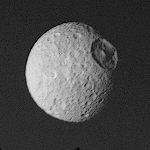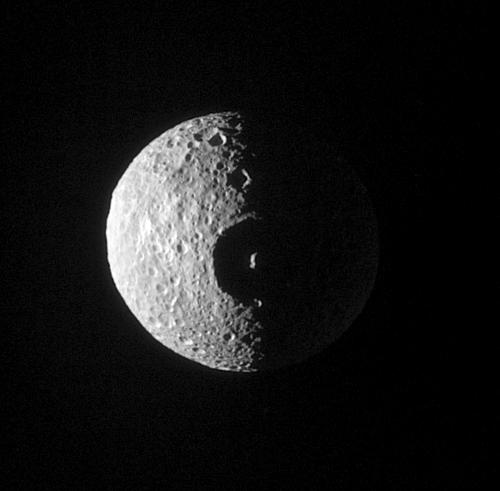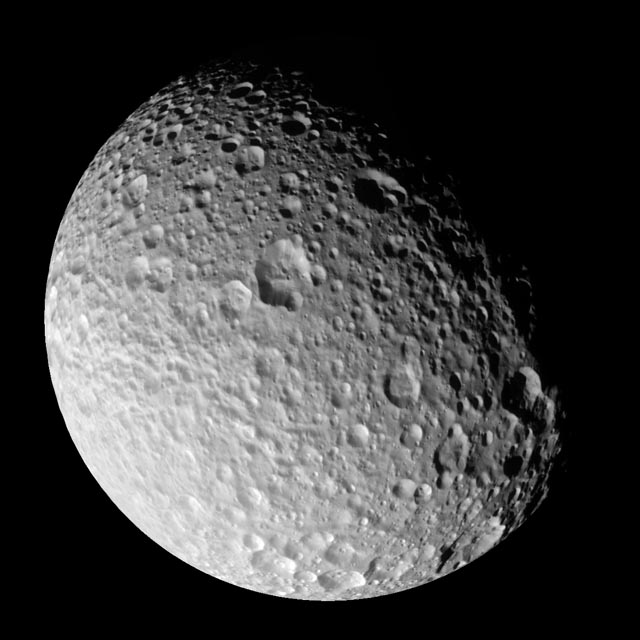

Mimas:
Mimas is one of the innermost moons of Saturn. Mimas was a Titan who was slain by Hercules. William Herschel discovered the moon in 1789. The surface is icy and heavily cratered. Mimas has a low density, meaning it probably consists mostly of ice. Because Mimas has such a low temperature of about -200C (-328F), the impact features may date back to the time of the moon's creation.

One of the craters, named Herschel, is surprisingly large in comparison to the size of the moon. The crater is 130 kilometers wide, one-third the diameter of Mimas. Herschel is 10 kilometers deep, with a central mountain almost as high as Mount Everest on Earth. This central mountain rises 6 kilometers above the crater floor. This impact probably came close to disintegrating the moon. Traces of fracture marks can be seen on the opposite side of Mimas.
Although Mimas is heavily cratered, the cratering is not uniform. Most of the surface is covered with craters greater than 40 kilometers in diameter but in the south polar region, craters greater than 20 kilometers are generally lacking. This suggests that some process removed the larger craters from these areas.

The most detailed images ever taken of Saturn's moon Mimas show it to be one of the most heavily cratered Saturnian moons, with little if any evidence for internal activity. Mimas has been so heavily cratered that new impacts can only overprint or even completely obliterate other older craters. Mimas is 397 kilometers or (247 miles) across. The moon displays an unexpected array of crater shapes. The highest crater walls tower 6 kilometers (4 miles) above the floors and show signs of material sliding down slope. Indeed, many of the large craters -- more than 15 kilometers (10 miles) in diameter -- appear to be filled in with rough-surfaced material, likely the result of landslides triggered by subsequent impacts elsewhere on Mimas' surface. Some of these deposits have craters superimposed on them, demonstrating that the landslides themselves may be quite old. Grooves, some of which are over a kilometer deep, cut across the surface for more than 100 kilometers (63 miles). These are some of the only indications that there might have once been internal activity under this ancient, battered surface.
Of course, there are alternative explanations for Mimas.
